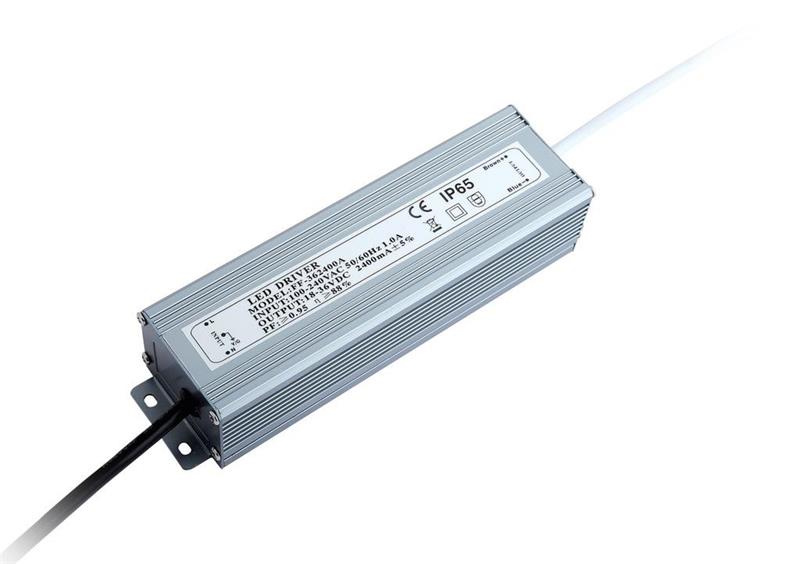LED is the abbreviation of “LIGHT EMITTING DIODE” in English. Because of its many advantages such as environmental protection, long life, high photoelectric efficiency (current light efficiency has reached 200LM/W), and shock resistance, it has been applied in various industries in recent years. Rapid development, theoretically , The service life of LED is about 100,000 hours, but in the actual application process, some LED lighting designers have insufficient understanding of LED driver or improper selection or blind pursuit of low cost, resulting in greatly shortened product life of LED lighting products, poor LED. The life of lamps is less than 2000 hours, and some are even lower. As a result, the advantages of LED lamps cannot be fully exerted.
Due to the particularity of LED processing and manufacturing, the current and voltage characteristics of LEDs produced by different manufacturers or even the same manufacturer in the same batch of products have great individual differences. Taking the typical specifications of high-power 1W white light LEDs as an example, we will briefly explain the current and voltage changes of the LEDs. Generally, the forward voltage of 1W white light is about 3.0-3.6V. That is to say, when the nominal 1W LED is used . When a current of 350 mA flows, the voltage across it may be 3.1V, 3.2V or 3.5V or other values. In order to ensure the life of a 1W LED, the general LED manufacturer recommends that the lighting factory use a current of 350mA. To drive, when the forward current through the two ends of the LED reaches 350 mA, a small increase in the forward voltage across the LED will cause the forward current of the LED to increase significantly, so that the temperature of the LED rises in a straight line, thereby accelerating the LED light. Decay, shorten the life of the LED, and even burn out the LED in severe cases. Due to the particularity of the voltage and current changes of LEDs, strict requirements are placed on the power supply for driving LEDs.
LED driver is the key to LED lamps. It is like a person’s heart. To manufacture high-quality LED lamps for lighting, it is necessary to give up driving LEDs with constant voltage.
Many high-power LED packaging factories now seal many individual LEDs together in parallel and series to produce a single 20W, 30W or 50W or 100W or even higher power LEDs, although these individual LEDs are packaged before packaging. They are strictly selected and matched, but since there are as few as dozens or hundreds of single LEDs in the interior, the voltage and current of the packaged high-power LED products are still very different. Compared with a single LED (generally, the working voltage of a single white light, green light, and blue light is 2.7-4V, and the working voltage of a single red light, yellow light, and orange light is 1.7-2.5V), the parameter difference is greater!
At present, many LED light products (such as guardrail lights, lamp cups, flood lights, garden lights, etc.) produced by many manufacturers use resistance and capacitance to step down, and then add a Zener diode to stabilize the voltage to supply power to the LED, thus driving the LED. There are great defects in this method. First of all, the efficiency is low. It consumes a lot of power on the step-down resistor, which may even exceed the power consumed by the LED, and cannot provide high-current drive, because the larger the current, the more power is consumed on the step-down resistor. The greater the power, the more the current through the LED cannot be guaranteed to not exceed its normal working requirements. When designing products, the voltage across the LED is reduced to drive the power supply, which is at the expense of the brightness of the LED. The LED is driven by the resistance and capacitance step-down method, and the brightness of the LED cannot be stable. When the power supply voltage is low, the brightness of the LED becomes darker, and when the power supply voltage is high, the brightness of the LED becomes brighter. Of course, the biggest advantage of driving LEDs in the resistance and capacitance buck method is low cost, so some LED lighting companies still use this method.
Some manufacturers, in order to reduce the cost of products, use constant voltage to drive LEDs, which also brings a series of problems such as uneven brightness of each LED during mass production, and LEDs cannot work in the best state.
Constant current drive is the best way to drive LEDs. Using constant current drive, there is no need to connect a current limiting resistor in series with the output circuit, and the current flowing through the LED is not affected by changes in external power supply voltage, ambient temperature, and the discreteness of LED parameters. Thus, the current can be kept constant and the various excellent characteristics of the LED can be fully utilized.
The LED constant current power supply is used to supply power to the LED lamps. Since the current flowing through the LEDs will be automatically detected and controlled during the operation of the power supply, there is no need to worry about excessive current flowing through the LEDs at the moment of power-on, and there is no need to worry about the short circuit of the load. bad power supply.
The constant current drive method can avoid the change of the forward voltage of the LED and cause the current change. At the same time, the constant current can stabilize the brightness of the LED, and it is also convenient for the LED lighting factory to ensure the consistency of the product when it is mass-produced. Therefore, many manufacturers have already fully aware of the importance of driver, many LED lighting manufacturers have given up the constant voltage method and chose the higher cost constant current method to drive LED lamps.
Some manufacturers worry that the use of electrolytic capacitors for the power driver board will affect the life of the power supply, which is actually a misunderstanding. , the life is doubled”, then its working life is 16,000 hours in a 95-degree environment, 32,000 hours in an 85-degree environment, and 64,000 hours in a 75-degree environment. If the actual working temperature is lower, then the lifespan will be longer! From this point of view, as long as high-quality electrolytic capacitors are used, the lifespan of the driver supply will not be affected!
Another point worth paying attention to for LED lighting companies: because the LED will emit a lot of heat during the working process, the junction temperature of the die will rise rapidly. The higher the LED power, the greater the heating effect. The change of the electro-optical conversion efficiency and the attenuation of the electro-optical conversion efficiency, even failure in severe cases, according to the experimental test shows that the luminous flux of the LED itself increases by 5 degrees Celsius, the luminous flux will decrease by 3%, so the LED lamps must pay attention to the heat dissipation of the LED light source itself, if possible. Try to increase the heat dissipation area of the LED light source itself, and try to reduce the working temperature of the LED itself. If conditions permit, it is best to separate the power supply part from the light source part. It is not advisable to blindly pursue small size and ignore the working temperature of lamps and power supplies.


